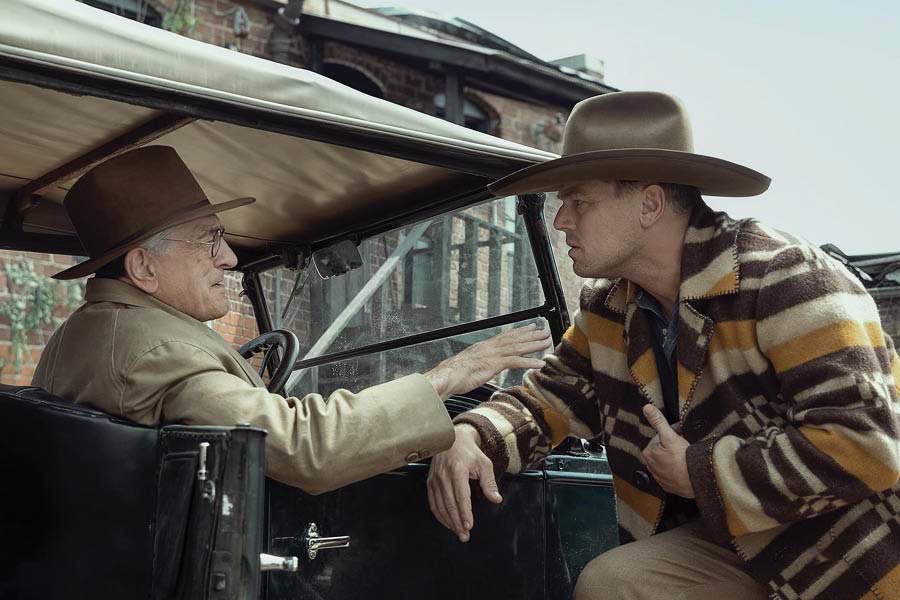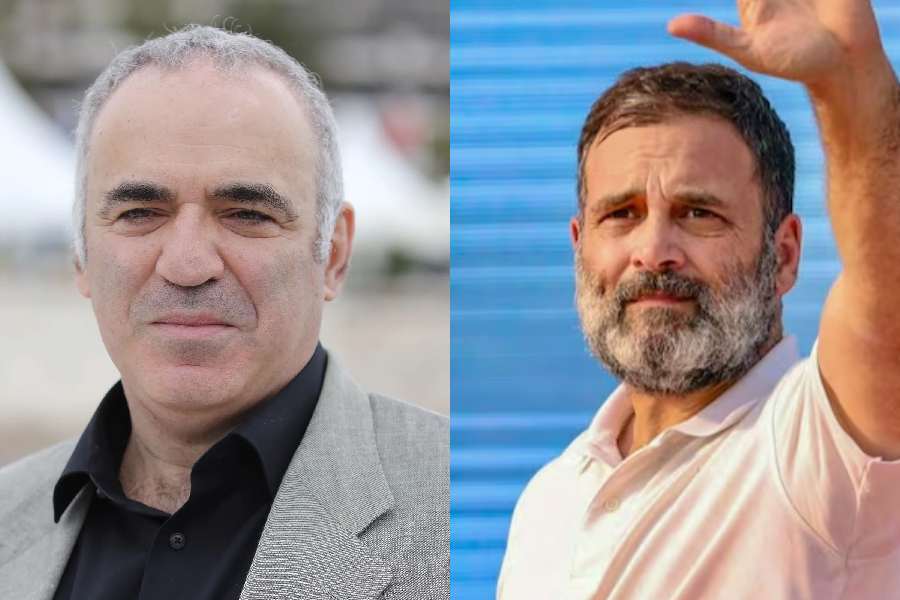Mean Streets. 1973. It is rather fitting that ‘Killers of the Flower Moon’ comes to us almost 50 years to the day that the film that set off what is, arguably, the greatest and most influential director-actor partnership in the history of cinema, did. Released on October 14, 1973, Mean Streets announced the arrival of two of cinema’s greatest names: Martin Scorsese and Robert De Niro.
Scorsese had two films to his credit at the time (Who’s Knocking at My Door and Boxcar Bertha) De Niro fared a little better, having been part of 11 films (two of which were uncredited), including three directed by Brian de Palma. However, it is with Mean Streets that both their cinematic journeys could be said to have truly begun, one that led to the creation of some of the most iconic characters in cinema in some of the greatest works of cinema. Killers of the Flower Moon could be just about the perfect culmination of this partnership (though one hopes there will be more), its apogee.
Despite the larger concerns of Killers of the Flower Moon and the array of standout performances that inform its telling (including that of Leonardo DiCaprio, who has seldom been better, and Lily Gladstone, the warm and beating heart of a film peopled with cold and conniving heartless men), it is tempting to see it from the prism of the collaboration between the actor and the filmmaker, given certain similarities in the characters De Niro has essayed in films directed by Scorsese as well as of the themes that has informed the director’s works.
Charlie Boy in Mean Streets. Travis Bickle in Taxi Driver. Jake La Motta in Raging Bull. Rupert Pupkin in The King of Comedy. Jimmy Conway in Goodfellas. Max Cady in Cape Fear. Sam Rothstein in Casino. Frank Sheeran in The Irishman. Barring the one misfire, New York, New York, all De Niro characters in Scorsese films have been people with psychological issues and a streak of violence, often manic violence.
Killers of the Flower Moon is no exception, with De Niro’s character in it forming a part of a continuum from Charlie Boy. As played by De Niro, William ‘King’ Hale is the very picture of evil, though with a telling departure. Unlike in the other films, where the De Niro character is the one often personally inflicting violence, here, Hale is simply pulling the strings like a puppeteer. But he is diabolical, maybe more than any other De Niro character in a Scorsese film barring Cape Fear (which like ‘Killers’ imbues the De Niro character with a sinister ‘religious’ bent). That bit about the religion also ties in with Scorsese’s lifelong obsession with matters of faith as seen in many of his films, though Hale’s invocation of religion is more insidious.
It is the 1920s, and the Osage Nation (comprising the townships of Gray Horse, Fairfax and Pawhuska) – pushed at the turn of the century to what is deemed to be the wasteland of Oklahoma – suddenly finds itself as the wealthiest group of people per capita in the country after the discovery of oil on its land. Through newsreel documentaries we are introduced to the incredible sight of white men in the employ of Native Americans, as chauffeurs and house-help. However, a larger, more sinister game of greed, evil and exploitation, with religion thrown into the mix, is afoot. The white man is naturally loath to lose out on the riches in the offing. What follows is a variant of the gold rush as Rodrigo Prieto’s masterly camerawork captures the frenzied atmosphere of people pouring into the county, looking for work in the oil companies, while unscrupulous operators plot to usurp the headrights to the oil fields.
William Hale (Robert De Niro) is just one of these corrupt operators but is by far the vilest of them all. And the most cunning too. Putting to use his rather thick-headed nephew Ernest Burkhart (Leonardo DiCaprio), Hale works out a system to corner the rights to the oilfields, a plan that involves murder. Sensing that Ernest can be manipulated easily, Hale leads him up the garden path, getting him a job as a driver, a job that leads Ernest to Mollie (Lily Gladstone), a wealthy Osage. They fall in love – or do they, given Ernest’s treacherous purpose – and marry, setting in motion a series of murders, including that of Mollie’s sisters, other members of her family and members of the community.
As Mollie discovers that like her sister who died of something called a ‘wasting disease’, she too has diabetes (a nice bit there about the coming of insulin in pharma markets), it provides Hale with an opportunity to influence Ernest to poison her medicine. Hale’s genius lies in the way he manages to remain a trusted ally of the Osage while plotting to defraud and kill them. As the killings add up, Mollie, driven by her Osage elders, undertakes a journey to Washington DC to persuade the president to help solve the murder of her people, leading to the advent of an officer from the Bureau of Investigation – a forerunner of the FBI – on the scene.
The greatness of Scorsese and Eric Roth’s adaptation of David Grann’s Killers of the Flower Moon: The Osage Murders and the Birth of the FBI lies in how they take a work that is primarily about the formation of the FBI through an investigation into the Osage murders and turn that into an exploration of the injustice meted out to and the exploitation of the Osage Nation. And though it is a severe indictment of America’s handling of its indigenous people, it is also a commentary on how such injustice and exploitation lie at the heart of all creation of wealth and the inequity arising from that anywhere in the world.
Right from the outset as the film opens to an Osage burial and then the arresting sight of oil gushing out of the land (accompanied by a terrific musical riff on the soundtrack in what is now a Scorsese signature – it is incredible how the background music in the film ebbs and flows with the narrative) one is aware of being in the presence of an epic. With its runtime of close to three-and-a-half hours, a number of reviews have used the word ‘daunting’ to describe the experience. It’s almost like saying that reading The Brothers Karamazov or The Count of Monte Cristo is daunting.
Scorsese’s long-time collaborator Thelma Schoonmaker finds just the right pace for the story to tease out its disparate elements – a crime thriller, a gangster film, a police procedural, a stunning treatise on moral turpitude. Killers of the Flower Moon unfolds like the best of books, word for word, sentence for sentence, paragraph for paragraph, page for page taking us through a history of greed and chicanery that underlined the American way of life, the dark abyss of American enterprise.
And yet, for those looking for a universal and timeless connect, there’s the astonishing commonality the film shares with what agitates our headlines almost a hundred years after the events in the film: Corporate greed and the question of ownership of land that have for millennia belonged to native settlers, and their systemic exploitation. And when Hale tries to convince Ernest Burkhart to not go against ‘your own’ and testify for the Bureau of Investigation, putting forth the hoary justification that ‘people forget and move on’, one can’t help but nod at the way such corrupt practices and their exposure remain in the news only so long, before both the media and the people move on in search of the next expose.
Killers of the Flower Moon is the work of a filmmaker at the height of his powers, as commanding at the age of 80 as he was at 30. A filmmaker whose mastery of the medium has gone beyond the ever-changing landscape of cinematic fashions to influence filmmaking styles and genres in the second decade of the new millennium with as much verve and power as it did 50 years ago.
Shantanu Ray Chaudhuri is a film and music buff, editor, publisher, film critic and writer










